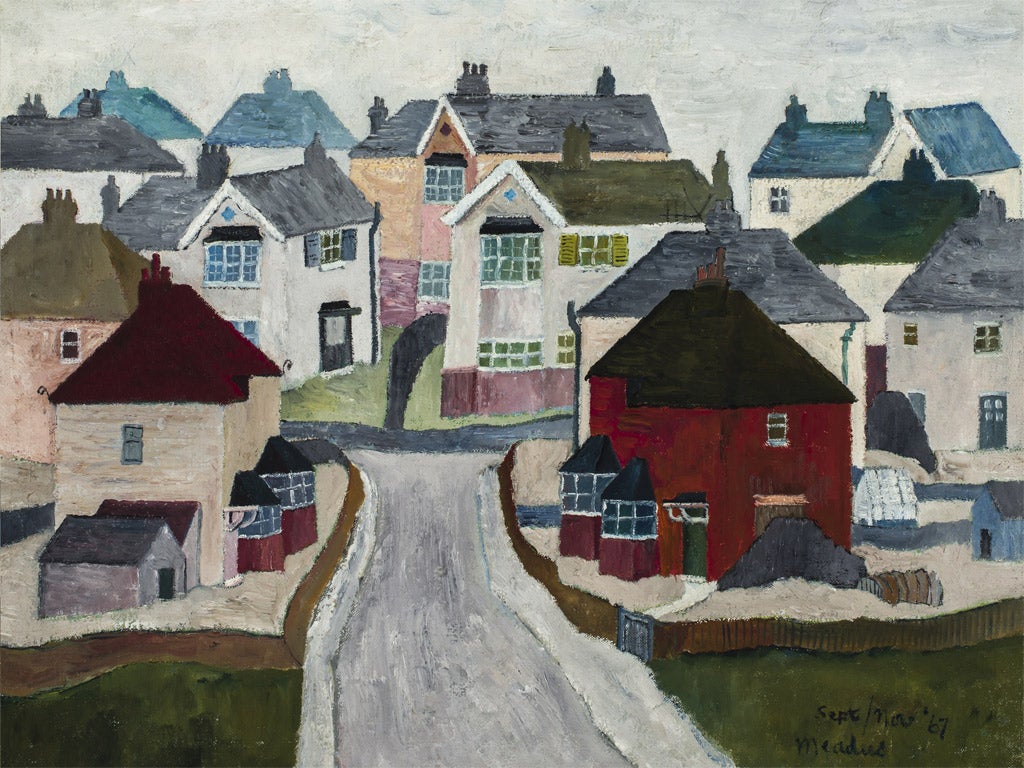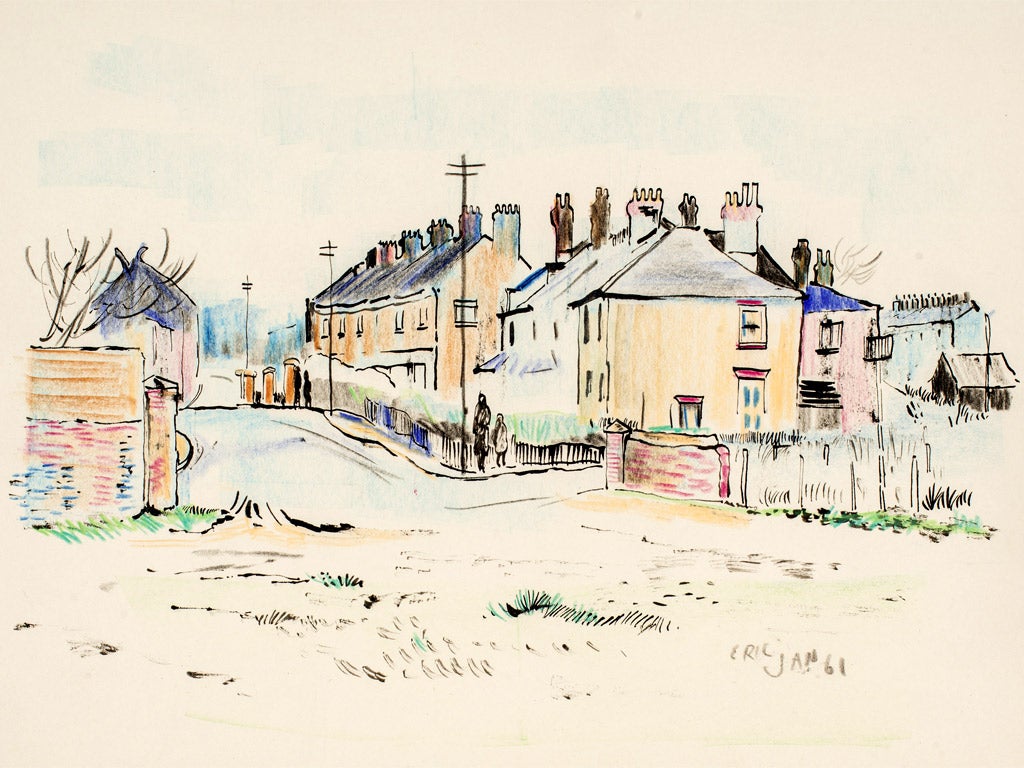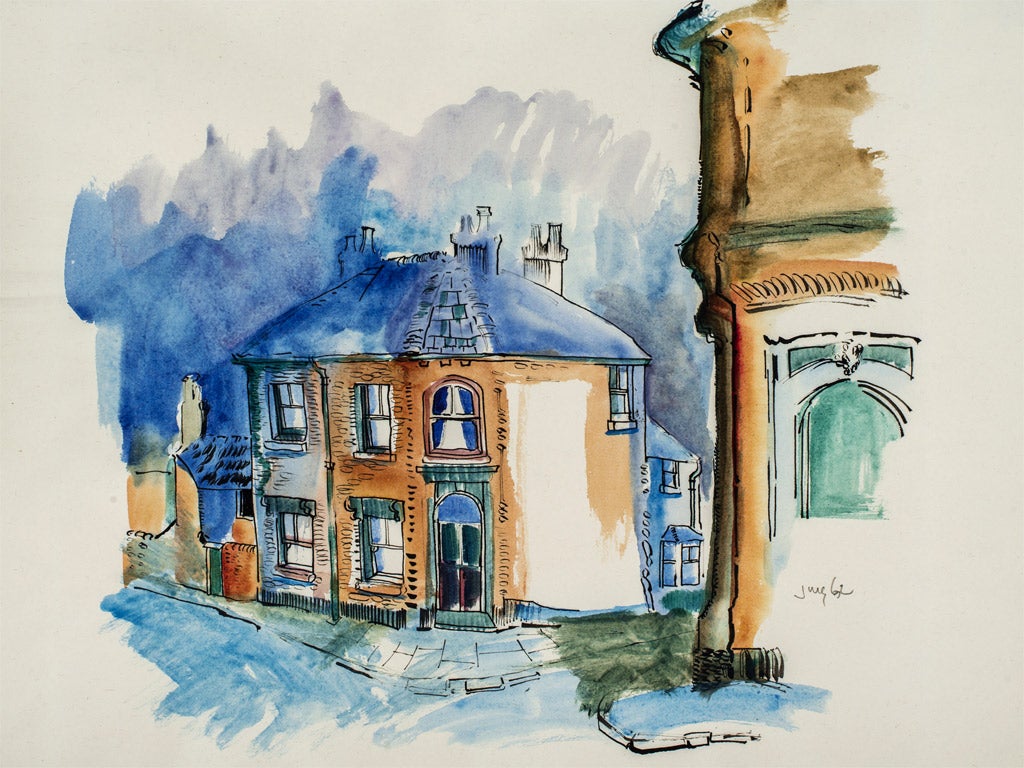Cutting-edge culture from the suburbs?
Yes, council estates and drain covers can be beautiful too, argues Philip Hoare as a new exhibition in Southampton demonstrates

No one looks to suburbia for cutting-edge art. If anything, it's where art escapes from – a place to leave as soon as possible. My hometown of Southampton is a case in point. Its rows of semi-detached, interwar houses were the very model of what I sought to escape as a teenager. In my case, into the anarchic embrace of punk, and all that came after. Those endless streets of identical houses represented claustrophobia, and the muffled tick of an afternoon clock, the deadening of any creative spirit.
And yet, for all the art editorials which dwell lovingly on a world of metropolitan lifestyles – all warehouse apartments and international travel – most of us came from suburbia, or return to it, or even still live there. Some of us might even be proud of that ultimate adjectival put-down: provincial.
Southampton – to which I have returned – has always seemed to me a lost city of the South. It has an extraordinary past – neolithic settlement, Roman fortress, medieval walled town; a Georgian spa period which saw it rival Bath and Brighton; the glamorous age of the liner which saw virtually every celebrity of the first half of the 20th century pass through its port; and a pivotal role in both world wars.
But the latter left it bereft. Its elegant Georgian high street, admired by Horace Walpole and Thomas Gray, drawn by Turner and hymned by JB Priestley, was bombed out of existence and replaced by the kind of postwar planning which gave British architecture a bad name. It's the same fate that was visited on many cities – from Plymouth to Coventry, from Bristol to Glasgow.
A recent report claimed that Southampton is one of the best cities to live in – ironically because of its proximity to other places: within easy reach of London, and the south coast. It seems destined to be a place defined by other places. Somewhere people pass through, rather than visit for its own sake. But now, the work of a little-known son of the city, artist Eric Meadus, seeks to give a new charm its backstreets – views with which we are all familiar, but which we barely see, any more than we notice the birds over our heads.
Meadus, born on a Southampton council estate in 1931, was largely a self-taught artist, until he met Margery Clarke – a Northerner who'd made her home in the South. She befriended Meadus, and introduced him to a potent new influence – her close friend, LS Lowry. They met in 1965, on one of Lowry's visits to Clarke. "All this young man lacks is experience of the art world," he told Clarke. "He will go straight to the top."
It was a somewhat optimistic prediction; but the quiet charm and keen observation of Meadus's work, bears out Lowry's praise. If Lowry himself has been reappraised as a result of last year's Tate Britain show, then perhaps Meadus stands to receive a similar appreciation in Artists in Tandem, a joint show of the two men's work at Southampton City Art Gallery, which has just opened.
Meadus's artistic eye brings a new focus to suburbia, not least because he spent all his life there. He worked at the Pirelli General Cable Works – the same factory to which my own father, fleeing the depression of the North, came to work in the 1930s, and which neither he nor Meadus ever leave. Its vast, engulfing brick edifice was built on reclaimed land next to the docks, a production line spewing out giant transatlantic cables which seemed to tether Britain as a client nation to America. But every lunchtime, Meadus would escape its confines and spend an hour wandering the streets, sketching what he saw.
Meadus recorded postwar Southampton – the beginnings of new council estates, drain covers, Nissen huts left over from the war – the much-bombed city's residual places; the stuff on the periphery of things. (Oddly enough, Turner, who had drawn Southampton two centuries before, had also recorded mundane scenes such as coastal conduits, as well as the old town's buildings, in a manner which reflects Meadus's attentive eye.) In his sketch books, Meadus drew old pubs and shops – soon to disappear as the sense of suburban community was replaced by soulless draw of supermarkets and out-of-town stores. These were streets before the coming of the car; before neat front gardens were turned into parking spaces; before UPVC windows destroyed the character of terraces and semis, replacing art deco stained glass with ersatz modern replicas.

It is a lost world, an abandoned utopia, wreathed with a sense of the departed, all the more so for the ordinariness of Meadus's subjects. His drawings and paintings are by turns witty and melancholy. There is a little of Lowry's proud urban spirit in them, but also some of Philip Larkin, who famously pronounced, "Home is so sad/ It stays as it was left/ Shaped to the comfort of the last to go/ As if to win them back." They make me think of Stevie Smith, too, in her Palmers Green fastness, commenting, with irony: "There is far too much of the suburban classes/ Spiritually not geographically speaking. They're asses/ Menacing the greatness of our beloved England, they lie/ Propagating their kind in an eightroomed stye."
The suppressed voice of the suburb is a very English sensibility: quiet, unvocal, almost – but not quite – apologetic. Few contemporary artists, caught up with sensation and shock, would bother with such subject matter. Only George Shaw, whose work – painstakingly rendered in Humbrol oils (more usually employed in painting model aircraft in suburban bedrooms) – and who himself was brought up on a Coventry estate – explores similar, subtly unsensational images of English streets as a kind of shadowy collective memory. All those blank windows evoke untold stories, their emptiness" teeming with human presences", as Shaw says. Indeed, for his current exhibition at the Douglas Hyde Gallery in Dublin, Shaw quotes another suburban subversive, JG Ballard, who wrote of the suburbs, "their very blandness forces the imagination into new areas".

Meadus's work will also be on display in a solo show, Almost a Meteor, at the remarkable suburban gallery which Margery Clarke runs, with her son, Paul.
Clarke, now in her eighties, and herself an artist, set up the First Gallery in her detached interwar house in Bitterne, the neighbouring suburb to where I grew up. Art is crammed into every corner: sculptures on shelves and tables, stacks of canvases against the skirting boards. Even the kitchen is a miniature gallery in itself.
In this evocative context, it's rather moving to witness Margery Clarke's devotion to Meadus. One can see in her what Lowry saw, too: a real, innate enthusiasm for art, for its own sake, far from the metropolitan concerns of gallerists, careers and reputations.
Meadus, who never married, died young, at 39, of the same obscure disease which his beloved sister had died of a year before. Thanks to Margery Clarke's devotion, his art lives on, modestly celebrating the suburbs we all know so well, yet which we seem to conspire to forget.
Artists in Tandem: Eric Meadus with LS Lowry, Southampton Art Gallery (tinyurl.com/p7g2jc3) to 22 March; Almost a Meteor, First Gallery, Southampton (023 80 462723) to 2 March
Join our commenting forum
Join thought-provoking conversations, follow other Independent readers and see their replies
Comments
Bookmark popover
Removed from bookmarks